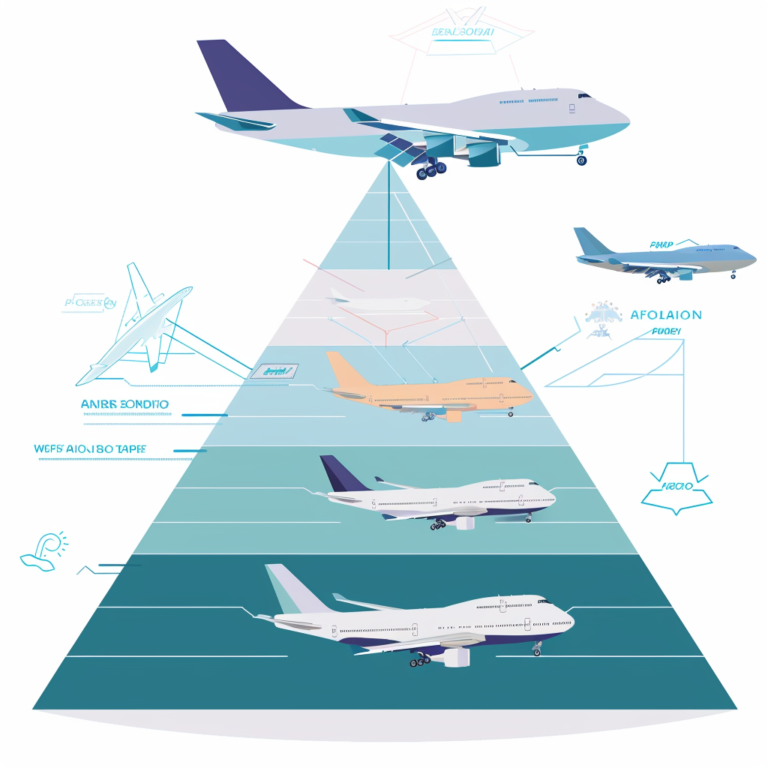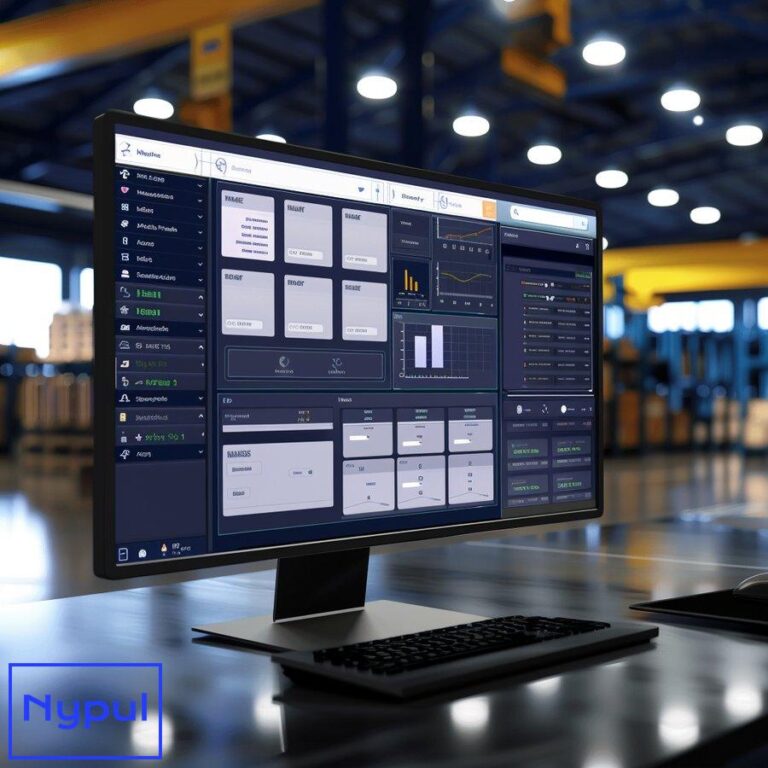Why It Is Important to Have Warehouse Management System WMS and Transport Management System TMS Integration in the Supply Chain
What are Warehouse Management Systems (WMS) and Transportation Management Systems (TMS)?

Warehouse Management Systems (WMS)
A Warehouse Management System (WMS) is a software application designed to optimize and manage the day-to-day operations of a warehouse. It serves as the central hub for all warehouse activities, from receiving and putaway to picking, packing, and shipping. WMS solutions aim to streamline processes, improve inventory accuracy, and maximize the utilization of warehouse space and resources.
Core functionalities of a WMS typically include:
– Inventory management: Tracking stock levels, locations, and movements in real-time
– Order processing: Managing order fulfillment from start to finish
– Labor management: Assigning tasks, monitoring productivity, and optimizing workforce allocation
– Yard and dock management: Coordinating inbound and outbound shipments, trailer parking, and loading/unloading operations
Advanced WMS may also offer features like slotting optimization, cross-docking, kitting, and value-added services management. By digitalizing warehouse processes and data, a WMS provides visibility, control, and agility needed to adapt to changing customer demands and market conditions.
Transportation Management Systems (TMS)
A Transportation Management System (TMS) is a logistics platform that empowers businesses to plan, execute, and optimize the shipment of goods. Its primary goal is to improve shipping efficiency, reduce transportation costs, and ensure cargo security and compliance. A robust TMS enables shippers to make informed, data-driven decisions and gain end-to-end control over their transportation networks.
Key capabilities of a TMS encompass:
– Carrier management: Qualifying, onboarding, and managing relationships with carriers
– Route planning and optimization: Determining the most cost-effective and time-efficient shipping routes
– Freight audit and payment: Automating invoice reconciliation and facilitating timely, accurate payments to carriers
– Tracking and visibility: Monitoring shipments in transit and providing real-time status updates to stakeholders
Sophisticated TMS also support multimodal and intermodal transportation, allowing shippers to leverage a combination of road, rail, air, and ocean freight. By integrating with other supply chain systems like WMS and ERP, a TMS can unlock new levels of operational efficiency and deliver a seamless, connected logistics experience.
In summary, WMS and TMS are two critical components of the modern supply chain technology stack. While WMS focuses on optimizing warehouse operations, TMS streamlines transportation processes. When integrated, these systems can create a powerful, end-to-end solution for managing the flow of goods from origin to destination.
Why is WMS and TMS integration crucial for supply chain efficiency?
In today’s fast-paced, customer-centric business environment, supply chain efficiency is more critical than ever. Companies must be able to respond quickly to changing demands, optimize inventory levels, and deliver products on time and in full. This is where the integration of Warehouse Management Systems (WMS) and Transportation Management Systems (TMS) comes into play.
Bridging the Gap between Warehouse and Transportation

WMS and TMS are designed to optimize different aspects of the supply chain – warehousing and transportation, respectively. However, these two functions are intrinsically linked. The efficiency of warehouse operations directly impacts transportation planning and execution, and vice versa.
For example, if a warehouse experiences delays in picking and packing orders, it can lead to missed shipping deadlines and transportation bottlenecks. Conversely, if transportation is not properly coordinated with warehouse activities, it can result in congestion at loading docks and suboptimal utilization of warehouse resources.
By integrating WMS and TMS, companies can bridge this gap and create a seamless, end-to-end flow of information and goods. Integration allows the two systems to share real-time data on inventory levels, order statuses, shipping schedules, and more. This visibility enables better coordination between warehouse and transportation teams, reducing the risk of delays, errors, and inefficiencies.
Enabling Proactive Decision-Making
Another key benefit of WMS and TMS integration is the ability to make proactive, data-driven decisions. When these systems operate in silos, it can be challenging to get a complete picture of supply chain performance. Data may be fragmented, outdated, or inconsistent, making it difficult to identify improvement opportunities or respond to disruptions.
With an integrated WMS and TMS, companies gain a unified view of their supply chain operations. They can track key metrics like inventory turnover, order cycle times, transportation costs, and on-time delivery rates in real-time. This visibility allows them to spot trends, anomalies, and bottlenecks early on and take corrective action before they escalate into major issues.
Integrated systems also enable more accurate forecasting and planning. By analyzing historical data on supply and demand patterns, companies can optimize inventory levels, transportation routes, and resource allocation. They can also run simulations to test different scenarios and contingency plans, ensuring they are prepared for any eventuality.
Enhancing Customer Service
Ultimately, the goal of supply chain efficiency is to deliver better customer service. In today’s market, customers expect fast, flexible, and transparent fulfillment options. They want to know exactly when their orders will arrive and be able to track them every step of the way.
WMS and TMS integration plays a critical role in meeting these expectations. By streamlining warehouse and transportation processes, companies can reduce lead times, improve order accuracy, and offer more precise delivery estimates. They can also provide real-time shipment tracking and proactive communication to keep customers informed and engaged.
An integrated approach also enables companies to offer value-added services like same-day delivery, custom packaging, and returns management. By leveraging the combined capabilities of WMS and TMS, they can differentiate themselves in the market and build stronger, more loyal customer relationships.
In conclusion, WMS and TMS integration is not just a nice-to-have – it’s a necessity for companies that want to compete and thrive in today’s supply chain landscape. By bridging the gap between warehouse and transportation, enabling proactive decision-making, and enhancing customer service, integration can drive significant improvements in efficiency, agility, and profitability.
What are the key benefits of integrating WMS and TMS?
Integrating Warehouse Management Systems (WMS) and Transportation Management Systems (TMS) can yield a wide range of benefits for companies looking to optimize their supply chain operations. Let’s explore some of the key advantages in more detail.
Improved Inventory Visibility and Accuracy
One of the primary benefits of WMS and TMS integration is enhanced inventory visibility. When these systems are connected, they can share real-time data on stock levels, locations, and movements across the entire supply chain. This visibility is critical for making informed decisions about inventory management, order fulfillment, and transportation planning.
For example, suppose a customer places an order for a product that is out of stock at the primary warehouse. With an integrated system, the TMS can instantly check inventory levels at other locations and route the order accordingly. This not only improves the speed and accuracy of order fulfillment but also helps to prevent stockouts and overstocking.
Integration also enables more precise inventory tracking and traceability. By capturing data on every movement of goods, from receiving to shipping, companies can maintain a complete audit trail and quickly identify the root cause of any discrepancies or errors. This is particularly important for industries with strict compliance requirements, such as pharmaceuticals and food and beverage.
Increased Operational Efficiency
Another key benefit of WMS and TMS integration is increased operational efficiency. When these systems work together seamlessly, they can automate and streamline many of the manual, time-consuming tasks involved in warehouse and transportation management.
For instance, an integrated system can automatically generate pick lists and packing slips based on real-time order data from the TMS. This eliminates the need for manual data entry and reduces the risk of errors. Similarly, the WMS can provide the TMS with accurate data on shipment weights, dimensions, and special handling requirements, enabling more efficient load planning and carrier selection.
Integration also allows for better coordination between warehouse and transportation teams. By sharing real-time data on order statuses, shipping schedules, and dock availability, these teams can work together more effectively to optimize resource utilization and minimize delays. This can lead to faster order processing times, higher throughput, and lower labor costs.
Reduced Transportation Costs
Transportation is often one of the largest expenses for companies, accounting for up to 50% of total supply chain costs. By integrating WMS and TMS, companies can identify opportunities to reduce these costs while improving service levels.
One way integration can help is by enabling more accurate and timely data sharing between systems. For example, the WMS can provide the TMS with real-time data on order volumes, product dimensions, and shipping deadlines. The TMS can then use this information to optimize transportation plans, consolidate shipments, and select the most cost-effective carriers and routes.
Integration also allows for better collaboration with carriers. By sharing data on shipment statuses, delivery windows, and performance metrics, companies can work with carriers to identify improvement opportunities and negotiate better rates. They can also use the data to monitor carrier compliance and hold them accountable for meeting service level agreements.
Enhanced Customer Service
Perhaps the most important benefit of WMS and TMS integration is the ability to enhance customer service. In today’s fast-paced, omnichannel environment, customers expect nothing less than perfect order fulfillment – the right product, at the right time, in the right condition.
An integrated system can help companies meet these expectations by providing end-to-end visibility and control over the order fulfillment process. From the moment an order is placed to the moment it is delivered, companies can track its progress and proactively address any issues that arise.
Integration also enables companies to offer more flexible and personalized delivery options. By leveraging the combined capabilities of the WMS and TMS, they can support a wide range of fulfillment models, such as buy online, pick up in store (BOPIS), ship from store, and same-day delivery. This not only improves the customer experience but also helps to differentiate the company in a crowded market.
In summary, the benefits of WMS and TMS integration are clear and compelling. By improving inventory visibility, increasing operational efficiency, reducing transportation costs, and enhancing customer service, integration can help companies optimize their supply chain performance and gain a competitive edge.
What challenges might arise during WMS and TMS integration?
While the benefits of integrating Warehouse Management Systems (WMS) and Transportation Management Systems (TMS) are significant, the process of integration itself can be complex and challenging. Companies must be prepared to navigate a range of technical, operational, and organizational hurdles to ensure a successful outcome.
Data Compatibility and Quality
![]()
One of the primary challenges of WMS and TMS integration is ensuring data compatibility and quality. These systems often use different data formats, structures, and naming conventions, which can make it difficult to share information seamlessly.
For example, the WMS may use a different product identification system than the TMS, leading to confusion and errors when transferring data between the two systems. Similarly, if the data in either system is incomplete, inaccurate, or outdated, it can compromise the integrity of the entire integration.
To overcome these challenges, companies must invest in data mapping, cleansing, and standardization processes. This may involve creating a common data model that defines how information is structured and exchanged between the WMS and TMS. It may also require implementing data quality controls and governance policies to ensure that data is accurate, consistent, and up-to-date.
Integration Architecture and Middleware
Another challenge of WMS and TMS integration is designing and implementing the right integration architecture and middleware. There are several approaches to integration, each with its own pros and cons:
| Approach | Pros | Cons |
|---|---|---|
| Point-to-Point | Simple, fast, low cost | Difficult to scale, maintain, and modify |
| Enterprise Service Bus (ESB) | Flexible, scalable, reusable | Complex, expensive, requires specialized skills |
| API-led | Modular, agile, easy to use | May require significant development effort |
The choice of integration approach will depend on factors such as the company’s existing IT infrastructure, budget, timeline, and long-term goals. In many cases, a hybrid approach that combines elements of different architectures may be the best solution.
Regardless of the approach chosen, companies must also select the right middleware tools and technologies to support the integration. This may include enterprise application integration (EAI) platforms, service-oriented architecture (SOA) frameworks, or cloud-based integration services.
Change Management and User Adoption
Perhaps the most significant challenge of WMS and TMS integration is managing the organizational change and user adoption process. Integration can have a profound impact on the way people work, requiring them to learn new processes, technologies, and ways of collaborating.
For example, warehouse workers may need to adapt to new picking and packing workflows that are driven by the integrated system. Transportation planners may need to learn how to use new optimization algorithms and dashboards to make better decisions. And IT staff may need to acquire new skills in data integration, API development, and system administration.
To ensure successful adoption, companies must invest in comprehensive change management and training programs. This may involve:
- Communicating the benefits and rationale for integration clearly and consistently
- Involving key stakeholders in the design and implementation process
- Providing hands-on training and support to help users learn the new system
- Measuring and monitoring user adoption and satisfaction over time
- Celebrating successes and sharing best practices across the organization
By addressing the human side of integration, companies can help ensure that their employees are engaged, empowered, and equipped to take full advantage of the new capabilities.
In conclusion, while WMS and TMS integration can be a complex and challenging undertaking, the benefits are well worth the effort. By carefully planning and executing the integration process, and by investing in the right technologies, processes, and people, companies can unlock new levels of supply chain performance and customer satisfaction.
What steps should be taken for successful WMS and TMS integration?
Integrating a Warehouse Management System (WMS) and Transportation Management System (TMS) is a complex process that requires careful planning and execution. To ensure a successful outcome, companies should follow a structured, phased approach that addresses the key technical, operational, and organizational considerations.
Step 1: Define the Integration Strategy and Objectives
The first step in any integration project is to define the overall strategy and objectives. This involves answering key questions such as:
- What are the primary goals of the integration (e.g., improving efficiency, reducing costs, enhancing customer service)?
- What is the scope of the integration (e.g., which processes, systems, and data will be included)?
- What is the timeline and budget for the project?
- Who are the key stakeholders and decision-makers?
By clearly defining the strategy and objectives upfront, companies can ensure that everyone is aligned and working towards a common vision.
Step 2: Assess the Current State and Gap Analysis
The next step is to assess the current state of the WMS and TMS and identify any gaps or challenges that need to be addressed. This may involve:
- Documenting the existing processes, systems, and data flows
- Identifying any technical or functional limitations of the current systems
- Assessing the quality and consistency of the data in each system
- Identifying any organizational or cultural barriers to integration
Based on this assessment, companies can develop a gap analysis that outlines the specific changes and improvements needed to achieve the desired future state.
Step 3: Design the Integration Architecture and Data Model
Once the current state and gaps have been identified, the next step is to design the integration architecture and data model. This involves:
- Selecting the appropriate integration approach (e.g., point-to-point, ESB, API-led)
- Defining the data model and mapping between the WMS and TMS
- Identifying the middleware tools and technologies needed to support the integration
- Designing the integration workflows and business rules
The integration architecture and data model should be designed with scalability, flexibility, and maintainability in mind. It should also be aligned with the company’s overall IT strategy and roadmap.
Step 4: Develop and Test the Integration
With the design in place, the next step is to develop and test the integration. This involves:
- Building the integration components and workflows based on the design
- Configuring the middleware tools and technologies
- Developing any custom APIs or interfaces needed to support the integration
- Testing the integration thoroughly to ensure data accuracy, performance, and reliability
Testing should be done in a staged approach, starting with unit testing of individual components and progressing to end-to-end testing of the entire integration. Any issues or defects should be identified and resolved before moving to the next stage.
Step 5: Deploy and Stabilize the Integration
Once the integration has been developed and tested, it can be deployed to the production environment. This involves:
- Preparing the production environment and infrastructure
- Migrating any necessary data from the old systems to the new integrated system
- Training end-users on the new processes and workflows
- Providing post-deployment support to ensure a smooth transition
During the stabilization period, it’s important to monitor the integration closely and address any issues that arise. This may involve fine-tuning the integration parameters, optimizing performance, or providing additional user support.
Step 6: Continuously Improve and Evolve the Integration
Integration is not a one-time event, but an ongoing process of continuous improvement and evolution. As business needs and technologies change, the integration must adapt and evolve toStep 6: Continuously Improve and Evolve the Integration
Integration is not a one-time event, but an ongoing process of continuous improvement and evolution. As business needs and technologies change, the integration must adapt and evolve to stay relevant and effective. This involves:
- Monitoring the performance and usage of the integrated system over time
- Collecting feedback from end-users and stakeholders on areas for improvement
- Identifying new opportunities for optimization or automation
- Keeping up with the latest industry trends and best practices
- Regularly reviewing and updating the integration strategy and roadmap
By continuously improving and evolving the integration, companies can ensure that they are getting the maximum value from their WMS and TMS investments.
Step 7: Measure and Communicate the Benefits
Finally, it’s important to measure and communicate the benefits of the WMS and TMS integration to all stakeholders. This involves:
- Defining key performance indicators (KPIs) and metrics to track the success of the integration
- Collecting and analyzing data on the performance of the integrated system
- Sharing the results and success stories with stakeholders across the organization
- Celebrating the achievements and recognizing the contributions of the project team
By demonstrating the tangible benefits of the integration, companies can build support and momentum for future supply chain optimization initiatives.
What can we learn from successful WMS and TMS integration case studies?
While the steps outlined above provide a general framework for WMS and TMS integration, every company’s journey is unique. By studying successful integration case studies, we can gain valuable insights and best practices that can inform our own efforts.

Case Study 1: Global Retailer Achieves End-to-End Visibility
One global retailer successfully integrated its WMS and TMS to achieve end-to-end visibility across its supply chain. The company had been struggling with siloed systems and processes that made it difficult to track inventory and shipments in real-time.
By integrating its WMS and TMS using an API-led approach, the retailer was able to:
- Improve inventory accuracy from 70% to 95%
- Reduce order processing time from 2 days to 2 hours
- Increase on-time delivery rates from 80% to 98%
- Save over $10 million in annual transportation costs
The key to success was a phased implementation approach that focused on the most critical integration points first, such as order management and shipment tracking. The company also invested heavily in change management and user training to ensure smooth adoption.
Case Study 2: Food Distributor Optimizes Routing and Scheduling
Another successful example is a food distributor that integrated its WMS and TMS to optimize routing and scheduling. The company had been relying on manual processes and spreadsheets to plan its deliveries, which was time-consuming and error-prone.
By integrating its systems using a cloud-based TMS platform, the distributor was able to:
- Automate route planning and optimization based on real-time order data
- Reduce planning time from 8 hours to 30 minutes per day
- Increase truck utilization from 70% to 90%
- Improve on-time delivery performance from 85% to 99%
The key to success was a collaborative approach that involved both the warehouse and transportation teams in the design and testing of the integrated system. The company also leveraged advanced analytics and machine learning to continuously optimize its routing and scheduling.
Case Study 3: Manufacturer Improves Compliance and Traceability
A third example is a manufacturer that integrated its WMS and TMS to improve compliance and traceability. The company had been struggling to meet the strict regulations and reporting requirements of its industry.
By integrating its systems using an enterprise service bus (ESB) architecture, the manufacturer was able to:
- Automate the capture and sharing of compliance data across the supply chain
- Reduce manual data entry and errors by 90%
- Improve traceability and recall management capabilities
- Achieve 100% compliance with industry regulations
The key to success was a strong focus on data governance and quality management. The company established clear data standards and processes for ensuring the accuracy and consistency of its compliance data.
These case studies demonstrate the power of WMS and TMS integration to drive significant improvements in supply chain performance. By learning from these examples and adapting their approaches to our own unique contexts, we can accelerate our own integration journeys and achieve similar benefits.
In conclusion, WMS and TMS integration is a complex but critical undertaking for companies looking to optimize their supply chain operations. By following a structured approach, leveraging best practices and technologies, and learning from successful case studies, companies can overcome the challenges of integration and unlock new levels of visibility, efficiency, and customer satisfaction. The benefits are clear – now it’s up to each organization to take the steps necessary to realize them.





